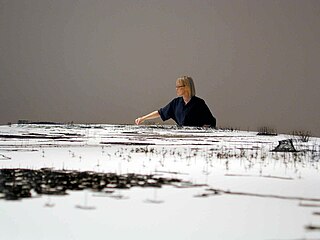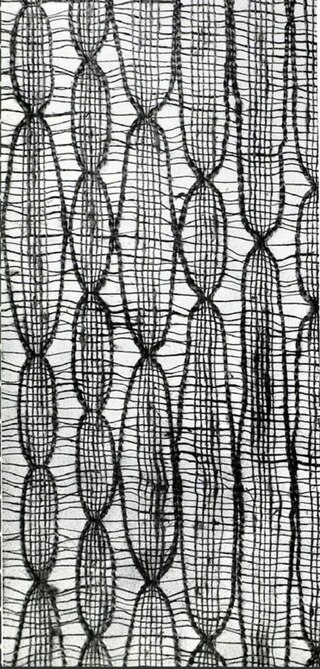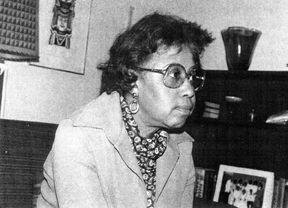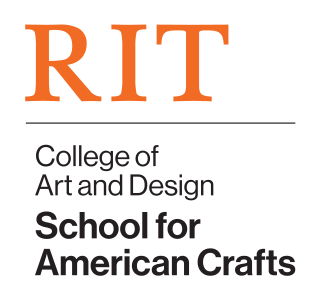Related Research Articles

Fiber art refers to fine art whose material consists of natural or synthetic fiber and other components, such as fabric or yarn. It focuses on the materials and on the manual labor on the part of the artist as part of the works' significance, and prioritizes aesthetic value over utility.

Sheila Hicks is an American artist. She is known for her innovative and experimental weavings and sculptural textile art that incorporate distinctive colors, natural materials, and personal narratives.

Anne Wilson is a Chicago-based visual artist. Wilson creates sculpture, drawings, Internet projects, photography, performance, and DVD stop motion animations employing table linens, bed sheets, human hair, lace, thread and wire. Her work extends the traditional processes of fiber art to other media. Wilson is a professor in the Department of Fiber and Material Studies at The School of the Art Institute of Chicago.

Adela Akers was a Spanish-born textile and fiber artist residing in the United States. She was Professor Emeritus at the Tyler School of Art. Her career as an artist spans the "whole history of modern fiber art." Her work is in the Renwick Gallery, the Metropolitan Museum of Art and the Museum of Art and Design. Her papers are at the Archives of American Art.
Polly Barton is an American textile artist.
Toshiko MacAdam is a Japanese textile artist based in Bridgetown, Nova Scotia, Canada. She is best known for her work with large-scale textile structures, especially "textile playgrounds" for children, brightly colored net-like structures of crocheted and knotted nylon.

Kay Sekimachi is an American fiber artist and weaver, best known for her three-dimensional woven monofilament hangings as well as her intricate baskets and bowls.

Marianne Strengell was an influential Finnish-American Modernist textile designer in the twentieth century. Strengell was a professor at Cranbrook Academy of Art from 1937 to 1942, and she served as department head from 1942 to 1962. She was able to translate hand-woven patterns for mechanized production, and pioneered the use of synthetic fibers.

Yoshiko Iwamoto Wada is a Japanese textile artist, curator, art historian, scholar, professor, and author. She has received international recognition for her scholarship and expertise in the field of textile art. In 2010, she was named a "Distinguished Craft Educator - Master of Medium" by the James Renwick Alliance of the Smithsonian Institution, who stated: "she is single-handedly responsible for introducing the art of Japanese shibori to this country". In 2016 she received the George Hewitt Myers Award for Lifetime Achievement.
Jane Alden Stevens is an American photographer and educator. Solo exhibitions of her work have been mounted at the ARC Gallery in Chicago, the Herbert F. Johnson Museum of Art in Ithaca, NY, and the Pittsburgh Filmmakers Gallery. She has exhibited extensively abroad, including in Finland, Ukraine, Belgium, Germany, and Brazil. Stevens’ photographs are included in the permanent collections of the George Eastman House International Museum of Photography and Film in Rochester, NY, the Cincinnati Art Museum, and the Museu da Imagem e do Som in São Paulo, Brazil. She is Professor Emerita of Fine Arts at the University of Cincinnati.
Lia Cook is an American fiber artist noted for her work combining weaving with photography, painting, and digital technology. She lives and works in Berkeley, California, and is known for her weavings which expanded the traditional boundaries of textile arts. She has been a professor at California College of the Arts since 1976.
Lisa Anne Auerbach is an American textile artist, zine writer, photographer, best known for her knitting works with humorous political commentary.

Françoise Grossen is a textile artist known for her braided and knotted rope sculptures. She lives and works in New York City. Grossen’s work has been acquired by the Metropolitan Museum of Art, New York; the Renwick Gallery, Smithsonian American Art Museum, Washington, DC; and the State Hermitage Museum, Saint Petersburg, Russia.

Wilhelmina McAlpin Godfrey was an American painter, printmaker and textile artist, art educator and community activist in Buffalo, New York.
Lore Kadden Lindenfeld was a German-American textile designer. She taught visual arts at Middlesex County College. Her work has been exhibited in group and solo exhibitions internationally.

Anila Quayyum Agha is a Pakistani–American cross-disciplinary artist. Agha explores social and gender roles, global politics, cultural multiplicity, and mass media within drawing, painting, and large-scale installations. In 2014, Agha's piece Intersections won the international art competition, Artprize, twice over with the Public Vote Grand Prize and the Juried Grand Prize in a tie with Sonya Clark, the first time in Artprize's history.
Nance O'Banion (1949-2018) was an Oakland based American artist who "pioneered creative explorations of handmade paper". She is known for her sculptural paper works and book works which focus on themes of change and transformation. A retrospective sample of the arc of her work may be viewed at: https://nance-obanion.com

Lili Blumenau (1912–1976) was an American fiber artist. She was a pivotal figure in the development of fiber arts and textile arts, particularly weaving, in the United States during the mid-part of the 20th century.
Hiroko Sato-Pijanowski is a Japanese jewelry designer, artist, author and educator. Sato-Pijanowski is credited with introducing Japanese materials and techniques to American metal working. She is based in Yokohama in Kantō, Japan.

The School for American Crafts was founded by Aileen Osborn Webb and the American Craftsmen's Council (ACC) in the 1940s. It sought to provide training in traditional crafts and "to develop and raise the standards of the hand arts in the United States."
References
- ↑ "Silk Tape II - Scroll #2 and #3". American Craft Council. Retrieved 13 April 2022.
- 1 2 3 Ciliberto, Jon (12 September 2018). "Stitching Sutras: Junco Sato Pollack at Swan Coach House Gallery". Burnaway. Retrieved 13 April 2022.
- ↑ "Junco Sato Pollack - CV 2012". juncosatopollack.com. Retrieved 2016-03-05.
- ↑ "Junco Sato Pollack - Artist Biography". juncosatopollack.com. Retrieved 2016-03-05.
- ↑ "Junco Sato Pollack - Artist Statement". juncosatopollack.com. Retrieved 2016-03-05.
- ↑ KMVT (2013-03-01), Present! - Junco Sato Pollack at the San Jose Quilt Museum , retrieved 2016-03-05
- ↑ "Junco Sato Pollack - Activities". juncosatopollack.com. Retrieved 2016-03-05.
- ↑ "Junco Sato Pollack - CV 2012". juncosatopollack.com. Retrieved 2016-03-05.